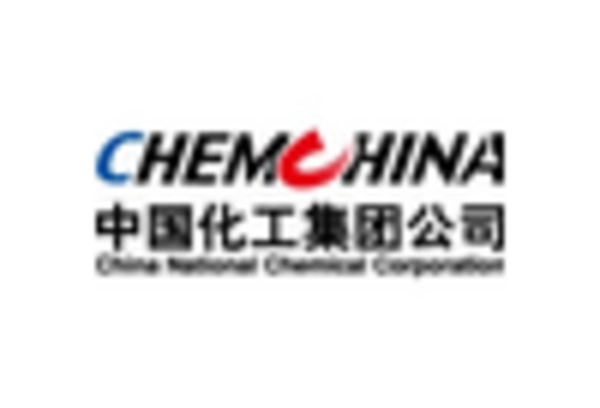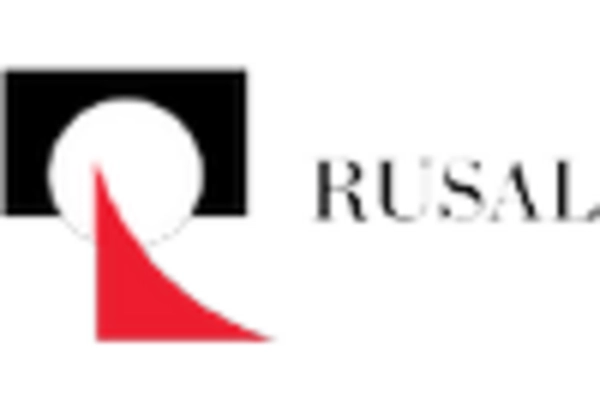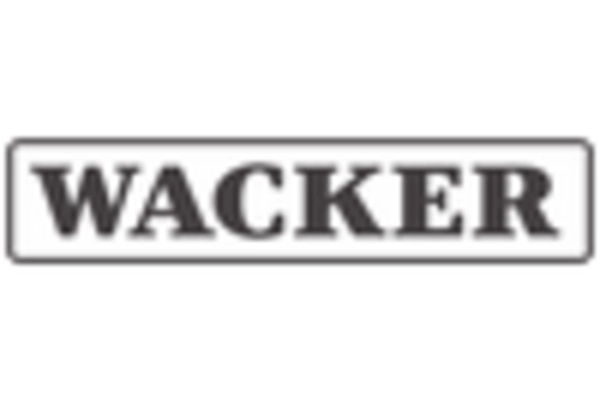Rising Demand from Automotive Sector
The automotive sector is experiencing a notable increase in demand for silicon alloys, primarily due to their lightweight and high-strength properties. Silicon alloys are increasingly utilized in the production of automotive components, which enhances fuel efficiency and reduces emissions. In 2025, the automotive industry is projected to account for a significant share of the silicon alloys market, driven by the shift towards electric vehicles and advanced manufacturing techniques. The Silicon Alloys Market is likely to benefit from this trend, as manufacturers seek materials that can withstand high temperatures and provide durability. Furthermore, the integration of silicon alloys in electric vehicle batteries is expected to bolster market growth, as these materials contribute to improved performance and energy efficiency.
Growth in Renewable Energy Applications
The transition towards renewable energy sources is fostering growth in the silicon alloys market. Silicon alloys are essential in the production of photovoltaic cells and solar panels, which are critical components of solar energy systems. As the world increasingly invests in sustainable energy solutions, the demand for silicon alloys is anticipated to rise. In 2025, the silicon alloys market is expected to see a surge in applications related to solar energy, as governments and organizations prioritize clean energy initiatives. This shift not only supports environmental goals but also drives technological advancements in silicon alloy production, enhancing efficiency and reducing costs. The potential for silicon alloys in energy storage systems further underscores their importance in the renewable energy landscape.
Technological Innovations in Alloy Production
Technological advancements in the production of silicon alloys are significantly influencing the market landscape. Innovations such as improved smelting techniques and the development of new alloy compositions are enhancing the performance characteristics of silicon alloys. These advancements are likely to lead to increased efficiency and reduced production costs, making silicon alloys more attractive to various industries. In 2025, the silicon alloys market is expected to witness a rise in demand as manufacturers adopt these technologies to meet the evolving needs of end-users. The ability to produce high-quality silicon alloys with tailored properties could open new avenues for applications, particularly in sectors such as aerospace and electronics, where performance is paramount.
Increasing Use in Electronics and Semiconductors
The electronics and semiconductor industries are becoming increasingly reliant on silicon alloys, which are essential for the production of high-performance components. Silicon alloys offer superior electrical conductivity and thermal stability, making them ideal for various electronic applications. In 2025, the silicon alloys market is projected to expand as the demand for advanced electronic devices continues to grow. The proliferation of smart technologies and the Internet of Things (IoT) is likely to drive the need for silicon alloys in semiconductor manufacturing. This trend suggests a robust market potential, as manufacturers seek materials that can enhance the performance and reliability of electronic products.
Expansion of Construction and Infrastructure Projects
The construction and infrastructure sectors are witnessing a resurgence, which is positively impacting the silicon alloys market. Silicon alloys are increasingly used in construction materials, such as concrete and steel, due to their strength and durability. In 2025, the silicon alloys market is expected to benefit from the ongoing expansion of infrastructure projects worldwide, as governments invest in modernization and development. This trend is likely to create a steady demand for silicon alloys, as they contribute to the longevity and performance of construction materials. Additionally, the integration of silicon alloys in building materials aligns with sustainability goals, further enhancing their appeal in the construction sector.
















Leave a Comment